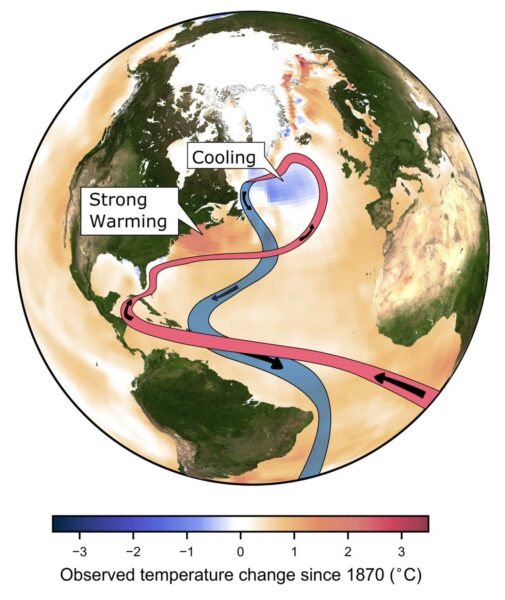
**Investigating the UK’s £57 Million Investment in Climate Cooling Technologies: Opportunities, Risks, and Community Engagement**
The United Kingdom’s Advanced Research and Innovation Agency (Aria) has taken a significant leap into the emerging and debated domain of climate cooling technologies, often referred to as solar radiation modification (SRM) or geoengineering. With a £57 million allocation across 21 varied research projects, Aria aims to evaluate the viability and safety of innovative approaches designed to lower global temperatures—a reaction to the ongoing increase in greenhouse gas emissions despite years of efforts aimed at reduction.
This funding initiative will bolster not just scientific modeling and lab analysis, but also five well-supervised small-scale outdoor tests. Importantly, Aria stresses that any outdoor experimentation will depend on thorough public consultation—recognizing the societal and ethical complexities associated with this new area of climate intervention.
In the sections below, we delve into the research objectives, potential advantages and disadvantages, as well as the wider ramifications of Aria’s climate cooling initiative.
—
### Grasping Climate Cooling Technologies
Climate cooling technologies seek to alter the Earth’s energy dynamics by diverting more sunlight away from the planet. Among the most prominent strategies discussed are:
– **Stratospheric Aerosol Injection (SAI):** This method entails releasing particulates, like sulfates or engineered dust, high into the stratosphere to reflect sunlight—simulating the short-lived cooling effect seen after significant volcanic eruptions.
– **Marine Cloud Brightening (MCB):** This strategy utilizes seawater aerosolization to enhance the reflectivity of low marine clouds, potentially lessening ocean warming and regional temperature extremes.
– **Arctic Ice Re-thickening:** Another avenue of research will consider if scientific methods can aid in the restoration or thickening of Arctic ice, which is vital for global climate stability thanks to its capacity to reflect solar energy.
These interventions are currently experimental, with their real-world effects and potential unintended consequences still largely unspecified.
—
### Highlighted Projects Funded by Aria
Some remarkable projects from Aria’s initiative include:
– **Mineral Dust Aging in the Stratosphere:** A £5.5 million investigation led by Professor Hugh Hunt at the University of Cambridge will explore naturally occurring, potentially safer materials like limestone or dolomite as substitutes for sulfate aerosols. Researchers will utilize weather balloons to observe how these materials behave over time in the stratosphere under regulated conditions.
– **Volcanic Emissions and Natural Aerosols:** A team from the University of Bristol, under the direction of Dr. Matt Watson, will deploy autonomous drones to track volcanic emissions. The insights gained from eruptions will enhance scientists’ understanding of how natural aerosols affect cloud formation and sunlight reflection—offering essential knowledge on how artificial methods may replicate these phenomena.
– **Cloud Reflectivity Experiments:** Several smaller outdoor studies will investigate the manipulation of cloud albedo through electric charges and seawater sprays—though these tests will only occur post public consultation and regulatory endorsement.
—
### The Discussion: Prospects Against Cautions
Scientific and public perspectives on the pursuit of geoengineering solutions remain profoundly split.
Advocates claim that vigorous investigation is essential. Stuart Haszeldine, a carbon capture authority from the University of Edinburgh, emphasizes the continual rise in emissions despite years of warnings and international accords. “Natural processes can cool the climate,” he notes, referencing historical volcanic eruptions that have lowered global temperatures. “Research is imperative, along with real-world testing—not solely laboratory studies.”
He and fellow scientists propose that climate cooling technologies could serve as temporary solutions or emergency measures during climatic crises, potentially allowing for more time for emission cuts and carbon capture strategies to be realized.
Conversely, critics such as Professor Mike Hulme of the University of Cambridge warn that heavy investment in uncertain technologies might siphon critical resources and political focus from established solutions like renewable energy, reforestation, and carbon capture. “These technologies will always remain speculative and unverified in practice until deployed at scale,” Hulme cautions. “Merely because they seem to work in simulations or small trials does not guarantee they will effectively and safely cool the climate.”
The risk of unforeseen repercussions—like alterations to rainfall patterns, ozone layer damage, or geopolitical strife over atmospheric management—also fuels doubt. Additionally, some worry that reliance on climate cooling technologies might undermine existing climate pledges by providing a “technological shortcut” instead of tackling the fundamental drivers of climate change.
—
### Community Involvement and Openness
Understanding the significant implications, Aria has pledged to prioritize public engagement in any future steps involving outdoor tests or implementation. By introducing open consultation and transparency into the research process, the agency hopes to cultivate trust and encourage informed democratic oversight over this contentious scientific realm.
This strategy highlights that while SRM research is predominantly scientific, its effects resonate deeply within societal, ethical, and political realms.
—
### Conclusion: A Pivotal Moment in Climate Advancements?
The UK’s groundbreaking £57 million investment represents one of the most ambitious public commitments to climate cooling technologies yet.